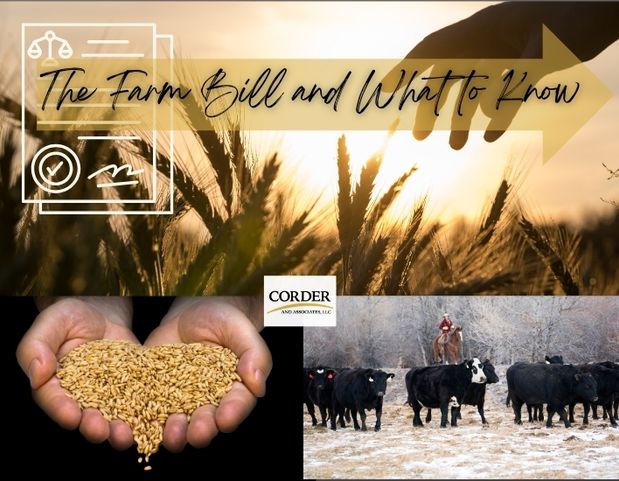The Farm Bill is like a multi-tool for food and agriculture programs, jam-packed with years of policies at home and abroad. The bill greatly impacts farmers, their livelihoods, how food is grown, and what food is grown. Furthermore, it covers programs such as crop insurance and food access for low-income families. Whether you are a farmer or rancher in agriculture or a consumer, these topics are significant for everyone and the environment.
The Farm Bill expires in 2023, as it was last passed into law in December 2018. It is titled as the Agriculture Improvement Act of 2018. The expiring bill goes through an extensive process of proposal, debate, and passed on to Congress for approval. It then must be signed into law by the President. Initially, the farm bill had three objectives — to maintain equitable food pricing for both farmers and consumers, ensure a sufficient food supply, and preserve and sustain the nation’s essential natural resources. Much change has come about in the last 70 years, but these goals are primarily still the same.
Farm Bill Titles and Basics
The farm bill is broken down into twelve sub-topics or titles as they are officially called.
- Title 1: Commodities. The Commodities title focuses on support for the farmers that raise crops like corn, soybeans, wheat, and rice. It also covers agricultural disaster assistance.
- Title 2: Conservation. The Conservation title covers programs that help farmers implement natural resource conservation efforts on working lands like pasture and cropland and land retirement and easement programs.
- Title 3: Trade. The Trade title covers food export subsidy programs and international food aid programs.
- Title 4: Nutrition. The Nutrition title covers the Supplemental Nutrition Assistance Program [SNAP] (formerly known as food stamps) and a variety of smaller nutrition programs to help low-income Americans afford food for their families.
- Title 5: Credit. The Credit title covers federal loan programs designed to help farmers access the financial credit (via direct loans as well as loan guarantees and other tools) they need to grow and sustain their farming operations.
- Title 6: Rural Development. The Rural Development title covers programs that help foster rural economic growth through rural business and community development (including farm businesses) as well as rural housing and infrastructure.
- Title 7: Research, Extension, and Related Matters. The Research title covers farm and food research, education, and extension programs designed to support innovation, from federal labs and state university-affiliated research to vital training for the next generation of farmers and ranchers.
- Title 8: Forestry. The Forestry title covers forest-specific conservation programs that help farmers and rural communities stewards of forest resources.
- Title 9: Energy. The Energy title covers programs that encourage growing and processing crops for biofuel, help farmers, ranchers, and business owners install renewable energy systems, and support research related to energy.
- Title 10: Horticulture. The Horticulture title covers farmers market and local food programs, funding for research and infrastructure for fruits, vegetables, and other horticultural crops, and organic farming and certification programs.
- Title 11: Crop Insurance. The Crop Insurance title provides premium subsidies to farmers and subsidies to the private crop insurance companies who provide federal crop insurance to farmers to protect against losses in yield, crop revenue, or whole farm revenue. The title also provides USDA’s Risk Management Agency (RMA) with the authority to research, develop, and modify insurance policies.
- Title 12: Miscellaneous. The Miscellaneous title is a bit of a catch-all. The current title brings together six advocacy and outreach areas, including beginning, socially disadvantaged, and veteran farmers and ranchers, agricultural labor safety and workforce development, and livestock health.
Writers of the Farm Bill
There are members of Congress that meet to draft the farm bills. They are members who also sit on the Senate and House Committees on Agriculture, Nutrition, and Forestry.
Cost of Farm Bill
The 2018 Farm Bill is projected to cost about $428 billion over the five years of the bill’s life, according to estimates from the Congressional Budget Office. The funding numbers are estimates and projections, but some of the programs do depend on the price of commodities and the volatility of the market.
Signing and Law
Once the President signs the bill, it becomes law, and funds are appropriated. Farmers and ranchers then express whether they implemented the programs. With outreach, it can be determined if the bill was successful or making a difference. If challenges occur, it is important to ensure they are communicated so that we can continue to build on the success and further improve farming systems. Lawmakers and agencies need to hear back from farmers, ranchers, and anyone in agriculture to work towards making the bill most efficient and helpful for everyone.





